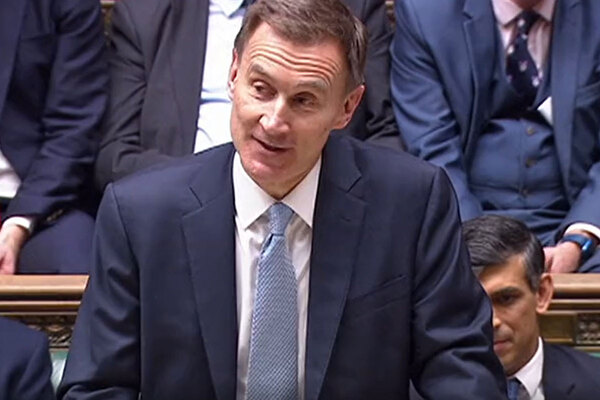How we can look to the past for housing finance of the future
As he steps back from his role as chief executive of bond aggregator The Housing Finance Corporation, Piers Williamson reflects on the way housing association finance has evolved
Unlike the vast majority of publicly listed or private equity-owned businesses, housing associations (HAs) have a much longer natural planning cycle and benefit from the investment of patient capital. The Housing Finance Corporation (THFC) was founded in 1987 to introduce private capital to the sector. I took the wheel of the organisation in 2002 and am about to hand over to my very capable successor: Priya Nair.
Armed with the corporate memory of the full 37 years, I am able to pass on a few lessons learned. First of all, I can observe a certain amount of symmetry in the time I have been in the business. Twenty-two years ago, interest rates were slightly higher than today, a marginally larger group of the banks were competing with each other, principally for large-scale voluntary transfer (LSVT) business, on terms that would prove unsustainable.
Back then, THFC went through a process of restructuring our old bonds and obtained what was then an A+ rating from Standard & Poor’s. This initially proved useful to us in expanding our relationship with the European Investment Bank (EIB).
Believe it or not, even as late as 2002, institutional investors could live without credit ratings (they had, after all, invested in our listed debentures on an unrated basis for the previous 15 years). But then 2007 and the dynamics of liquidity transformation risk (borrowing short term, lending long term) changed the balance of investment in the sector significantly.
Very long-term ‘mortgage-style’ lending by banks, funded by short-term professional inter-bank deposits, suddenly became an expensive loss leader for banks. In contrast, so-called ‘liability-matching’ by insurance companies and pension funds seemed to, once more, make sense (a fact being emphasised to this day in the prominent lobbying by institutional investors for Solvency UK).
It was already clear to THFC in 2007 that bank failures would lead to a rebalancing of lending/investment capacity to the capital markets (the prior near-end experiences of Midland Bank and Barclays Bank in the late 1980s, early 1990s – and THFC’s rapid growth in that period told us that).
That said, it is important to state that, since 2007, banks have mostly stayed the course, but in doing so, have restructured the terms of their loans to housing associations significantly, often at a price.
“It was already clear to THFC in 2007 that bank failures would lead to a rebalancing of lending/investment capacity to the capital markets”
From 2007, THFC regained significant traction and slowly expanded its client base. Thanks to its links with the sector regulator and the National Housing Federation, THFC was able to commentate on the sometimes alarming machinations of the markets and also to recommend to government innovative ways of furthering investment in the HA sector (HAs were by now far better credits than either the banks or volume housebuilding sectors).
In 2013, we were successful in launching the most cost-effective guaranteed funding in the sector’s history, using a combination of EIB money and very long-term bond finance. The vehicle we used, Affordable Housing Finance (AHF), distributed £3.2bn of low-cost, long-term bonds and the largest EIB investment the sector has ever seen.
With a total of £2.5bn invested across both AHF and THFC’s earlier EIB backed loans, THFC Group remains the largest conduit for EIB investment in housing regeneration in Europe, something we are very proud of.
So we arrive in 2024 when interest rates have arguably normalised and HA sector debt has risen to £123bn (including undrawn bank funding) and banks once again are competing enthusiastically, if on slightly more rational terms.
We know change is afoot, we just don’t quite know what exactly and when. The current liquidation of Evergrande 1 in China is a good example of a significant potential correction in the global real estate sector that has the capacity to spill over into wider markets.
The crucial fact for HAs is that they have accepted more refinance risk than ever before and an important part of their unique selling proposition for a fiscally challenged government is that HAs can borrow (invest) away from the government balance sheet.
“We know change is afoot, we just don’t quite know what exactly and when. The current liquidation of Evergrande 1 in China is a good example of a significant potential correction in the global real estate sector that has the capacity to spill over into wider markets”
The credit crunch did not materially impact HAs, because they already had very long-term funding and were fully compliant with their covenant requirements. They had private credit that would eventually need refinance, but they were at the back of the queue for liquidity and banks were at the front.
The next financial correction may well manifest itself through shadow banks and the insurance sector (this sector has assumed many banking-style risks since 2007), but conventional banks will not be immune.
The HA sector this time will be financially less robust than in 2007 and nearer the front of the liquidity queue (where illiquid real estate may well be a core concern). And so the next two or three years will prove challenging for a large number of HAs, seeking to remediate past defects and invest in their properties and communities, while alleviating fuel poverty via retrofitting properties.
It is important that the sector can give a cohesive offer (as well as an ask) to the government. With the right medium-term rent settlement and recognition (flexibility) from the government of how to address retrofit, the sector can enjoy a sustainable future, reinforcing the building blocks of the ‘new’ economy. But remember – patient capital needs patience and subsidised housing needs subsidy.
Piers Williamson, chief executive, The Housing Finance Corporation
Sign up for our development and finance newsletter
Already have an account? Click here to manage your newsletters













